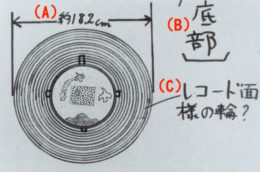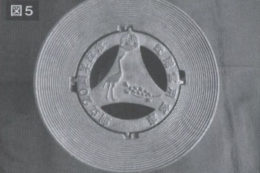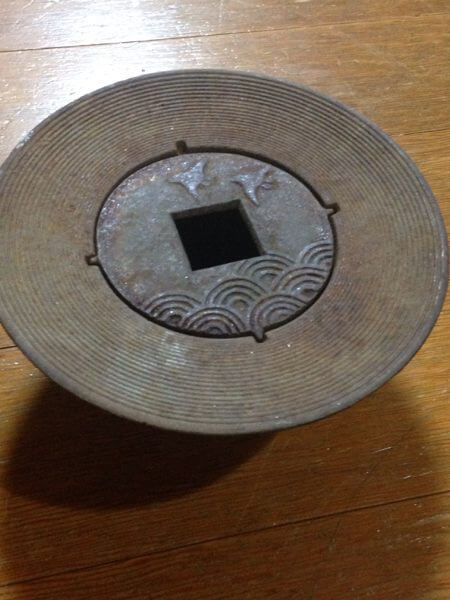by Charles Lear

Capturing a UFO in a photo or video is the goal of many UFO enthusiasts, but wouldn’t it be great to physically capture a UFO and examine it? From Japan comes the story of a group of young boys who claimed to have done just that. According to them, it was a small hat-shaped object that eventually managed to escape from them, but not before they were able to make some detailed drawings of it. The story made international news and is still discussed today. Japanese researcher, Otakupapa, wrote a well-researched six-part series about the case titled, “Amazing Japanese Boys Who Captured a Small UFO in 1972,” and published on his site, otakupapa.net.
The story as told by Otakupapa begins with a report by eighth grade middle school student Michio Seo that at around sunset on August 25, 1972, he had seen a small, strange object flying around a rice field. According to him, it would move instantly from one position to another as if it were teleporting.

Seo went home and told his friend, Yasuo Mori, what he had seen. Yasuo told his older brother, Hiroshi, and the two of them, along with a friend of Hiroshi’s, Kei Ojima, went to the field with Seo to see for themselves. A little after 8:00 p.m., Seo saw something flying around that had flashing lights. The other boys then saw it and watched it land. As the boys moved towards it, it flickered with a silverfish light. Hiroshi Mori reached out to touch the object, it suddenly glowed blue, and the boys ran away. According to the boys, it pulsated in two-to-three-second cycles. After about thirty minutes, they approached again and saw that the object was gone.
They went back the next evening and saw a 20 cm circle and four small indentations that formed a square. After this, the boys went out every night, and their number grew to nine. They had more sightings and tried to take pictures, but the camera would fail, or the pictures would turn out blurry or sometimes completely black.
According to Otakupapa, on September 19 or 20, depending on the source, the boys managed to physically capture the object they saw. On this occasion, when they got to the field, the saw an object shaped like a hat. They moved off to discuss what to do and came up with a plan: they would cover the object with a piece of cloth, pour water on it (they never saw anything when it rained, so they assumed what they were looking at was vulnerable to water), and then grab it.
According to Otakupapa, depending on the source, either Keikou Fujimoto, one of the later additions to the group, or Hiroshi Mori covered the object, poured water on it, and then threw a cinder block at it. When the block hit it, there was a dull thud and no reaction from the object. Either Fujimoto or Mori, fearful of radiation, picked the object up with the hem of his school uniform.

The object remained inert, and the boys decided to take it to the Moris’ house. There, they examined it and noted that it seemed to made of cast metal that was lighter than one might expect and strong. Ojima weighed, measured, and sketched the object. He came up with a weight 1.3 to 1.5 kg, a height of 7 cm, a diameter of 18.2 cm at the base, and 6.5 cm at the top.
On the bottom there were circular grooves resembling those in a phonograph record and a design that seemed to depict waves and birds. In the center was a square, that looked like it might be removable, with a grid pattern of holes.
They tried prying the square up, but were unable to. They hit it with a hammer and it didn’t even make a scratch. They were able to look through the holes and saw something like radio parts inside.
Before he went to sleep, Hiroshi Mori put the object in a plastic bag that he then put inside a knapsack. He then tied the mouth of the knapsack with string. In spite of his efforts, the object was gone when he woke up.
They found the object again and this time, Hiroshi Mori made a mark on it with oil-based ink to settle the argument as to whether they were dealing with the same object. When it disappeared for the second time and was once again recovered, the same mark was there on the object. The cycle of disappearance and recovery went on for a total of “5 or 6” times until it finally disappeared for good.

Two prominent Japanese astronomers, Tsutoma Seki and Koichi Ike, became interested in the case. Seki was known for his discovery of six comets. In 1972, he was a radio personality with Kochi Radio Broadcasting. One of the boys, Sadao Fujiwara, called the radio station to tell Seki their story. A female producer answered, took a message, and passed it on to Seki. Seki was intrigued, called Ike, and asked him to investigate. Ike interviewed the boys and came away impressed. He provided Seki with his recordings of witness accounts and his pictures of the site, and Seki suspected a hoax.
Seki went to investigate himself. He came to believe that the boys were telling the truth and published an article in an astronomy journal. This brought the story to the attention of the media and other UFO investigators, and it was treated as a genuine mystery and was told and retold for almost 40 years. Then, in 2009, prominent Japanese researcher Kenichi Nashimoto re-examined the case.
Nashimoto interviewed Keikou Fujimoto, and he stuck to his story. According to researcher Junichi Yaoi, Fujimoto was the first boy to handle the object and had, at one point, taken it home to show his parents. According to Otakupapa, Fujimoto’s father, Mutsuo, recognized it as being a cast ashtray. Nashimoto discovered there were garbage dumps and a casting factory in the area and speculated that the boys had found an ashtray in a dump, filled it with radio parts and made up the stories about it. He published his conclusions in an article titled, “The Impact of the ‘UFO Capture Incident,’” in the 2009 book The Complete Book of Japanese Weirdness.
Nashimoto’s article didn’t put an end to the story and Hiroshi Mori stuck to his version of the facts during an interview for the April 2014 issue of Mu magazine. Then, in 2017, Tatsuya Honjo, founder of the Association for Skeptical Investigation of Supernatural, had an article about the Kera incident published in the book, UFO Jiken Chronicle (Chronicle of UFO Incidents).

Honjo started his investigation by looking into a statement by Mutsuo Fujimoto that he recognized the object as being an ashtray that was painted silver and that he thought the whole thing was a prank. Honjo went to antique stores and auctions and then, in April 2017, he found a cast ashtray on Yahoo! Japan Auctions that looked very much like the boys’ UFO. While it was a little larger than the boys’ object, it had circular grooves and a lid with an image of a tortoise and a crane on it. He also found one with a bank logo on it.
Another researcher, Hikori Sakuragi, posted a picture in 2020 of an ashtray he found on Yahoo! that was almost the same as the Kera object but was missing the square piece of metal with the holes.

Despite the evidence that the story was a hoax, Otakupapa argues, “It’s still too early to jump to the conclusion that Kero’s UFO was a hoax.” In support of the boys’ tale, he brings up the fact the Sadao Fujiwara’s mother, Kiyoko, reported seeing a flying saucer-shaped object on October 26, 1972, a month after the boys said their UFO had disappeared for good. Also, according to him, there were other sightings in the area around the time of the incident. He asks, “Cui bono?” and closes with some speculation in the form of a science fiction narrative. In the narrative, he imagines that aliens have had a drone of theirs captured by children on another planet prior to the Kera incident. To insure that children who might capture one in the future wouldn’t be believed, they made the Kera drone resemble a commercially available ashtray.